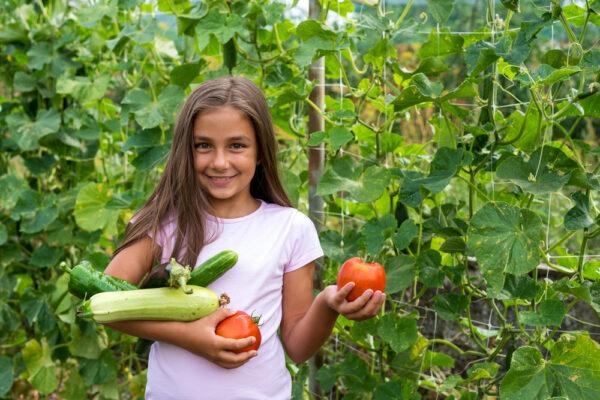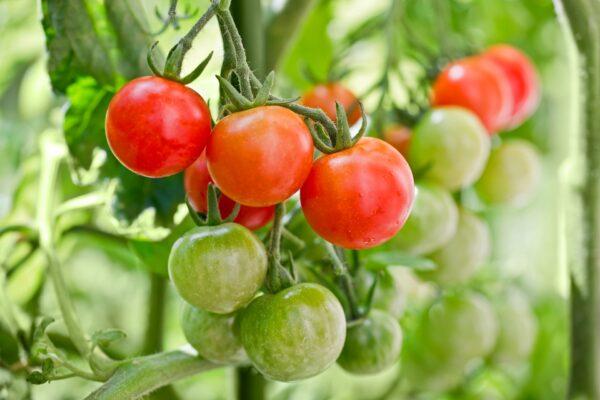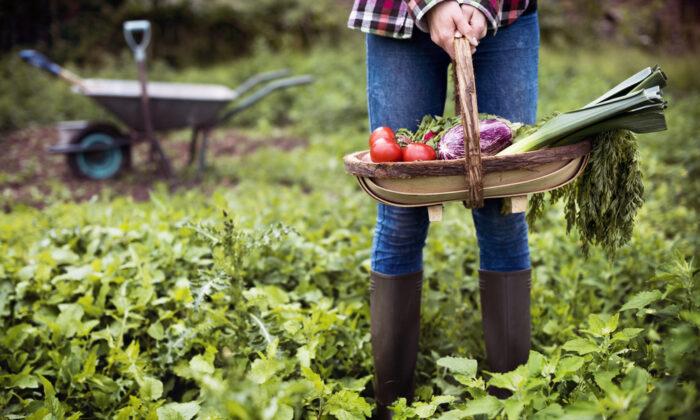“Corn grows up, carrots grow down, cucumbers grow around and around.” The phrase from the children’s book “Up, Down, and Around” swirled around in my head as I stood in freshly composted soil trying to keep up with the number of cucumbers my garden was producing. My 2-year-old searched diligently under leaves, proudly exclaiming “Here!” when she found another cucumber ready to pick.
I looked at my garden, exploding with green, not at all neat or orderly, but full and ripe with life nonetheless. My aching back, dirty hands, and full produce basket were all evidence that I had finally done it: I’d become a garden person.

Lessons Learned
I have always loved the idea of gardens. I used to pore over the pages of Beatrix Potter’s “Peter Rabbit,” thinking about how nice it would be to have vegetables arranged beautifully into rows, to watch life spilling out from the ground.The problem was, executing a garden always seemed to be out of reach for me.
When I was 8 or 9 years old, I convinced my mom to turn a small, square patch of grass into a vegetable patch for me. We turned over all that soil, and went to the store and bought seeds for carrots, tomatoes, peppers, cucumbers, and zucchini. We planted them, watered them, and waited for them to come up, but we never thought to protect them with a fence or netting.
That summer, the deer and rabbits in our neighborhood were well fed. The only thing they weren’t interested in eating was the zucchini. We had zucchini growing out of our ears that year.
I didn’t attempt to garden again until I was newly married and living in Charlottesville, Virginia. I bought some tomato seeds and planted them outside my ground floor apartment. I was so excited when green shoots came up from the ground, sure that juicy red tomatoes were soon to follow. It hadn’t occurred to me that the fact my shaded apartment never received direct sunlight might be an issue, but as the summer wore on, those green shoots grew taller and no tomato ever came.
Four years ago, after we bought our first home, I decided I would learn from my past mistakes and really give gardening a go. In February, I bought packets of seeds, planted them in tiny containers, and set them under a grow light in my basement. In April, I tilled a sunny patch of soil on the side of our house and fenced it in. In May, I transplanted my seedlings and crossed my fingers.
I was ecstatic when I harvested my first tomatoes and zucchini. It took a few years, and I made a number of mistakes, but I finally started to get the hang of what grew well in my soil and what didn’t seem to work.

Getting Started
My garden has never been Peter Rabbit-perfect, but it has been challenging, rewarding, and a lot of fun. I think there is something powerful about reminding yourself where food comes from and what it takes to grow. It’s a simple, rewarding pleasure to pick a ripened tomato off of your own vine, still warm and sweet from the sun.In a world where we have become disconnected from the source of our food, buying our meat and vegetables wrapped in plastic, it is so good for me to remember that food is not actually instant, but thrives on steady attention and patience. Being out in my garden helps me to slow down. It helps me to remember that good things take time. It forges a connection between me and my food that makes it meaningful.
If you’ve been thinking about starting a garden but haven’t taken the leap yet, here are a few tips that might help get you started.
- Plant in a sunny, protected spot. Vegetables need at least six hours of direct sunlight every day to thrive. Think about the size and shape of your plot; I know I have sometimes made my plot way too big for the amount of vegetables I planned to grow. The Old Farmer’s Almanac recommends a plot size of 10 x 16 feet (or smaller) as a good size for a beginning gardener. Be sure to protect your plot with netting or fencing to keep unwanted critters out.
- Happy soil means happy vegetables. Factors like your soil’s texture, pH balance, and humus levels affect the way your plants will grow. You can test your soil to find out your pH balance, and add organic matter like compost to make it healthier.
- Plan your space well. Think through what you want to grow and allow for plenty of space in between plants. Most plants need one to two feet between each seedling to thrive.
- Plant for the right time of year. Plant vegetables appropriate for the corresponding season. This information can be found in any gardening book. Vegetables that are not very fussy and easy to grow, such as tomatoes, zucchini, and squash, will make the idea of having a garden more manageable, and fun.






Friends Read Free